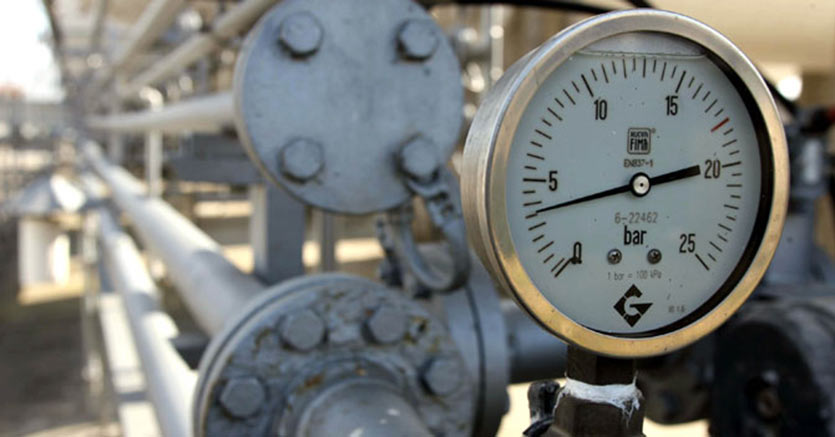All the news on the market and prices of LNG

Numbers, trends and scenarios of the LNG market
2020, also due to the effects of the pandemic, recorded a historic drop in gas consumption quantifiable at 75 billion cubic meters worldwide. Despite this, it proved to be much more resilient than other fuels. The IEA , in its recent outlook, remains optimistic about the outlook for fuel, predicting that gas prices will reach pre-pandemic levels in 2021. "But as the world slowly recovers from the crisis, global gas markets will be reshaped in depth and could see a time of change for future pricing patterns. A possible scenario could be the end of the indexation of natural gas ”, highlights Oilprice .
VOLATILE GAS PRICES DUE TO EXTERNAL SHOCKS
In addition to the structural decline in demand in 2020, the gas markets were characterized by strong volatility throughout the year, with record prices during the summer and then rising again from December to February 2021. These changes are due to the high sensitivity of gas prices to external shocks – such as thermal shocks, the Suez Canal crisis or the pandemic – which leads to major disruptions in supply and demand.
For example, as a result of the Texas storm in February, spot gas prices skyrocketed to $ 1250 / Mmbtu in mid-February, multiplied by 100 in one week, Bloomberg reported . To a lesser extent, this surge was visible in China, which was also hit by a cold spell, with fuel prices hovering between $ 2 per Mmbtu in December 2020 and $ 34 in mid-February. Under these conditions, the LNG cargoes mainly went to Asia rather than Europe, which is considered the market of last resort for LNG.
ASIA IN THE FRONT ROW, EUROPE THE SECOND RANGE MARKET
Indeed, Europe currently receives only the surplus ofLNG not satisfied by the demand of the “premium” Asian market. And this reduced availability of LNG has forced Europe to increase pipeline imports and withdraw fuel from underground storage, leading to higher prices, reinforced by a series of unplanned liquefaction plant outages and scheduled maintenance work on the Norwegian pipeline.
THINK OF CREATING A HUB IN ASIA
The reason behind the structurally higher prices in Asia compared to other regions lies in their traditional indexation of natural gas with oil. But today the globalization trends of the LNG trade are marking a fundamental shift in gas pricing mechanisms. LNG trading has become more flexible and no longer relies on long-term commitments, so LNG contracts are priced relative to their own benchmarks, distinct from oil.
Asia is one of the key regions driving this change, highlights Oilprice. Indeed, being one of the regions with the most gas consumers in the world, Asia largely lacks pipeline infrastructure, so it prefers LNG (whose contracts were tied to oil prices). But this year the tradition broke: the LNG supplied by Qatar was indexed to oil by only 10 to 11%.
THE LINK BETWEEN OIL AND GAS ON PRICES MAY BE ENDED
“As such, the Covid-19 crisis revealed the outdated nature of oil benchmarking of natural gas and marked a step towards the generalization of hub gas-on-gas (GOG) prices. Indeed, oil-indexed gas prices do not follow the supply and demand patterns of the gas sector, which distorts the market. They are sensitive to changes in oil demand and reflect neither the cost of producing gas nor the value customers place on it. The correlation between the Brent index and the price of LNG is gradually becoming less and less significant, casting doubt on the relevance of oil as a benchmark, ”explains Oilprice.
But creating a hub takes time and must be recognized by other market players and have national gas reserves, such as the TTF, created in the Netherlands thanks to gas from the Groningen field. India and Singapore have made attempts in this direction, but have so far failed.
GAS EXPORTING COUNTRIES FORUM HOPES TO CREATE A GLOBAL AND INTERCONNECTED MARKET WITH LOWER PRICE VOLATILITY
In short, the result of the pandemic could be a lower spread between the indices, which would make the LNG market more global and the price signals more harmonized. This is in particular the forecast of the Forum of Gas Exporting Countries ( GEFC ), which hopes to create a global and interconnected market with less price volatility. However, for the United States, this new paradigm of price convergence would result in a change in export strategy: for now, Washington has taken advantage of domestic production of low-cost gas and higher international sales prices.
“In the longer term, several additional sources of uncertainty for natural gas prices can be identified. The main one is the shift to less carbon-intensive sources, as several EU countries have adopted a 'coal-to-gas' strategy and phasing out nuclear energy, structurally improving long-term fuel demand. The potential inclusion of natural gas in the EU taxonomy and a potential emissions trading system (ETS) could also affect prices, ”concluded Oilprice.
This is a machine translation from Italian language of a post published on Start Magazine at the URL https://www.startmag.it/energia/come-cambieranno-mercato-e-prezzi-del-gnl/ on Mon, 10 May 2021 05:59:28 +0000.
